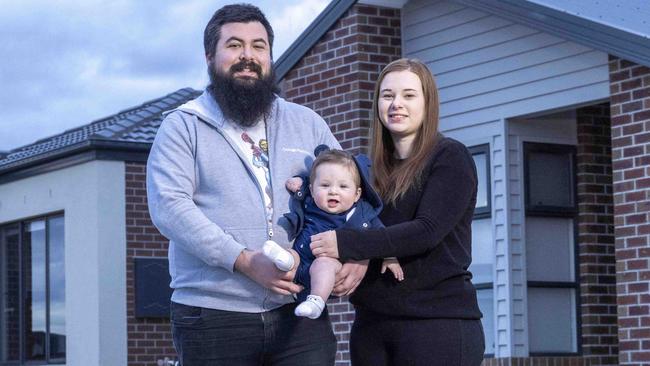Rise in people living on city’s outer edge but jobs still in CBD
A surge in residents calling Melbourne’s outer suburbs home will cause traffic and public transport to reach capacity in the west and north.

Victoria
Don't miss out on the headlines from Victoria. Followed categories will be added to My News.
Melbourne’s CBD will remain the state’s biggest source of jobs even if working from home remains popular in decades to come, Infrastructure Victoria predicts.
But more money will need to be spent on infrastructure at Melbourne’s fringes as changes to travel put even more pressure on gridlocked roads across the suburbs.
As part of its 30-year strategy report, the government’s infrastructure advisory body modelled the impact of the pandemic on travel patterns to help build a picture to show if some projects were still needed.
It modelled a future where a significant number of people who could work from home would do so on various days of the week.
The biggest change recorded by this trend was where Victorians would choose to live.
Inner Melbourne’s population would be 3.6 per cent less in 15 years time than when compared to typical projects.
Instead, more people would live in the already booming outer growth suburbs.
The Melton local government area is expected to grow by 470,000 people over the next three decades.
But the report did not believe that companies would abandon the CBD because of this trend.
It predicted the number of jobs located across inner Melbourne would actually increase by at least 3 per cent over the same period.
This would be driven by the fact that large companies based in this area would offer flexible working arrangements that were more attractive.
As Melburnians make their way into the CBD when needed, overcrowding on public transport will increase and traffic jams in the suburbs will rise as more people move across outer roads.
“While public transport trips are reduced, people are travelling from further away, increasing total passenger kilometres travelled,” the report reads.
“This increases congested kilometres travelled, especially because crowding now occurs earlier on the network.”
Bacchus Marsh and Melton V/Line services are expected to be full over the next decade and by the 2040s there will not be enough space on Cranbourne and Pakenham lines to meet demand.
“Public transport demand is expected to recover from the Covid-19 pandemic in the medium to long term, with passenger demand expected to peak at 110 per cent of capacity before 2036,” the report reads.
“There will be insufficient capacity on Melton and Bacchus Marsh services to meet the significant passenger demand emerging at new stations between Melton and Rockbank.”
Melbourne’s outer north and west will experience some of the worst increases to gridlock, with a 30 per cent jump in congestion over the next 15 years.
Major projects recommended by the advisory body would overcome some of this — including extensions to rail networks and a new outer metro ring road and rail corridor.
Infrastructure Victoria has also recommended the government preserve land that could be used for a road tunnel connection between CityLink and the Eastern Freeway.
Job growth in the Wyndham and Melton is not expected to match the pace of the population explosion, creating a need for easier movement between the west and the east.




